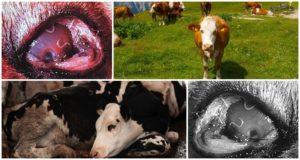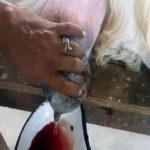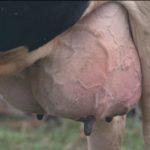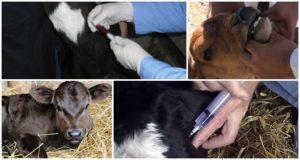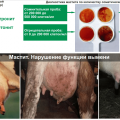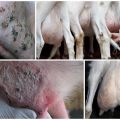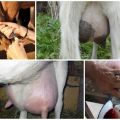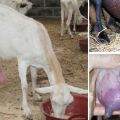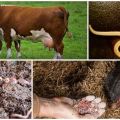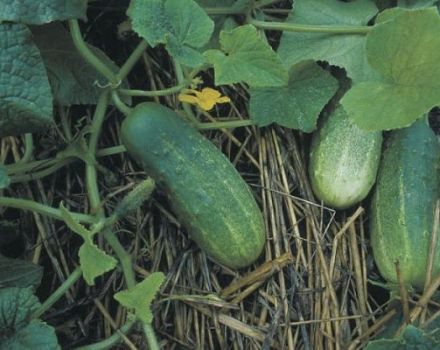Why and what is the cause of blood in cow's milk, what to do for treatment
Owners of dairy cows need to know a lot about the keeping of animals, proper feeding, what diseases can happen to them, and what may be evidenced by the admixture of blood in the milk of the cow. If this symptom was noticed, its degree and nature, the possible cause of its occurrence should be assessed according to the signs that will be listed below, and urgent remedial measures should be taken.
Causes and treatment of the problem
The reasons for the appearance of blood in milk in a cow can arise due to mechanical, physical damage or the development of diseases. All conditions, except for minor injuries, require veterinary advice and urgent medical measures.
You can notice this sign immediately, by the color of the dairy substance in a red-pink color or after aging in the refrigerator. Milk with blood stratified into fractions, while normal milk does not stratify.
Mastitis
The development of mastitis (inflammation of the glandular tissue) is always associated with udder congestion and infections. The disease develops more often after calving, when the cow is difficult to milk, her immunity is reduced, and the calf does not completely suck out colostrum. The skin of the nipples is dry, cracks that appear are the gateway to infection.
The manifestations of the disease can be overt or latent. In the absence of help or improper treatment, the disease is aggravated, and the stage of catarrhal phenomena is replaced by serous, then fibrous. Blood impurity in milk with mastitis indicates an unfavorable course and the development of a hemorrhagic form. The animal is in a depressed state, the body temperature is elevated to 41-42 degrees, the udder is painful, seals are felt in it. The presence of blood in the form of clots and analysis of milk for bacteria confirm the diagnosis.
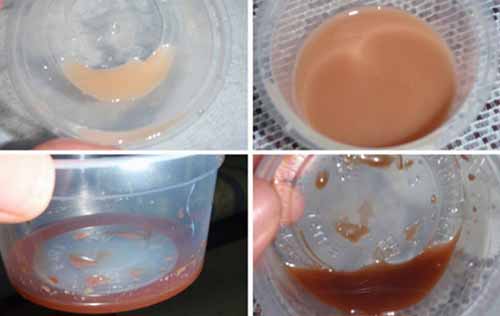
With hemorrhagic mastitis, antibiotics, anti-inflammatory drugs are prescribed, the cow is soldered with infusions of herbs (shepherd's purse, nettle, yarrow). Sparing milking is carried out every 3-4 hours, the nipples are pre-washed with laundry soap, washed off with warm water, the udder is easily massaged. It is important to empty it completely when milking. After milking, ointments are used to lubricate the nipples. With a severe course of the disease, droppers with glucose, calcium chloride, and caffeine injections are needed.
Vascular disorders
Vascular fragility or hemolysis may be the cause of the symptom in question. The milk turns pink with varying degrees of intensity. In young cows, udder vessels are brittle immediately after calving. In this case, it is not recommended to massage the udder, so as not to provoke ruptures of other vessels. A blood test shows a low platelet count. Hemolysis of blood vessels is possible with leptospirosis.
For treatment, the cow is given vitamins C, K, and calcium chloride is injected. The veterinarian may prescribe a hemostatic drug "Hemarctin". The calf is transferred to milk from another cow.
Bruises
Animals grazing or when moving in a herd, watering on the river can injure each other or get bruised on stones, logs, low-growing tree branches. If after milking blood is noticed and it is known that there is no mastitis, then you should carefully examine the udder, perhaps somewhere there is a swelling from a bruise.
It is recommended to apply cold to this place. In a day, you will need a warming compress, an iodine mesh.
Udder damage
Immediately after calving, there are mechanical damages to the udder by milking equipment, and during walking and grazing - scratches, cuts, abrasions. In this case, blood in the milk content occurs only at the beginning of milking, if the affected area is affected. To treat such injuries, wound-healing ointments are used. Disinfection of purulent wounds is carried out with hydrogen peroxide or chlorhexidine.
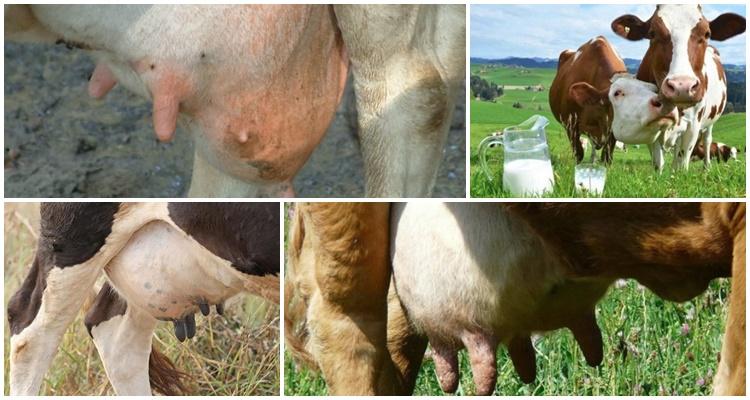
Prevention
For large and small farms, prevention of mastitis is essential. It is as follows:
- Rooms where animals are kept must be clean, well ventilated, and the bedding must be changed regularly.
- Cows' feed should be balanced, include a lot of coarse fiber, vitamins, minerals.
- Before milking, the udder should be rinsed or decontaminated. After milking, rinse with baking soda and wipe with emollient ointment.
- Distribute cows correctly.
- If pus or white flakes appear in the milk, immediately begin treatment without leading to the hemorrhagic stage.
Is it possible to drink milk with blood
People, calves and other animals should not drink cow's milk with blood. The reason is that the product, when blood particles enter it, greatly changes its properties.
Valuable proteins, casein, calcium in it are replaced by other substances, for example, chlorides. The composition is mixed with microbes that can be pathogenic to humans. When treating a cow, antibiotics and other substances are released along with milk. Although the cow continues to milk, the milk must be disposed of after testing.
It is important not to stop milking, to continue caring for the animal, to provide it with full-value vitamin feed, along with roughage, and not to stop walking. With proper treatment and good care, the condition when the cow has blood in the milk disappears rather quickly, and this valuable product can again be used by people for feeding the calf.
